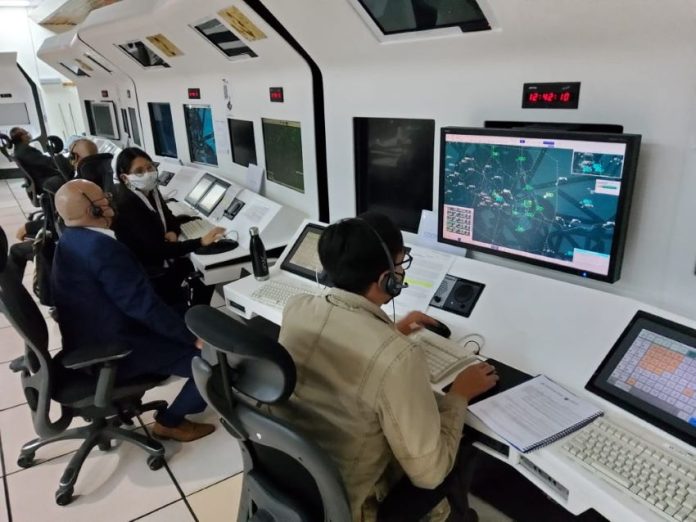The noise of landing airplanes approaching the Mexico City airport’s two runways is no longer exclusive to the neighborhoods of Moctezuma and Jardín Balbuena.
Residents of neighborhoods in the south of the city, near the beltway, say they are newly being exposed to the decibels resounding from jet turbines overhead.
That’s due to a redesign of routes used by Mexico’s air navigation service, in which a new approach has been added in the south of the capital to accompany those in the city’s north, above Ciudad Satélite, Lomas de Chapultepec and Nápoles.
The change went into effect on March 25, when the Ministry of Communications and Transportation announced the first phase of an overhaul of air traffic routes to and from the international airports in Mexico City and Toluca, México state. The changes won’t likely be perceptible to travelers, but officials predict they will help reduce by 16% the flight time of aircraft operating in the city’s airspace, as well as reduce operational delays, optimize takeoffs and landings and reduce plane fuel use.
The second phase will go into effect in March 2022 with the expected opening of Mexico City’s new Santa Lucía airport.
The redesign will also allow the use of performance-based navigation, which will permit the three airports to operate simultaneously without getting in each other’s way and increase route efficiency.
But the change means more noise for residents unaccustomed to hearing aircraft.
Live air traffic radars show the new movements through Xochimilco, Tlalpan, Coyoacán and Álvaro Obregón.
“Residents of Jardines de Pedregal and Tepepan had told me of the noise that just a few weeks ago wasn’t there,” said Jimena de Gortari, an academic who specializes in urban noise pollution at Universidad Iberoamericana, “and now I know for a fact that in Villa Olímpica, airplanes are passing frequently during the day and at night.”
Jardines del Pedregal’s neighborhood representative Roberto Bustamente explained that for residents there, the noise was a new phenomenon.
“For us, this is significant because we were accustomed to silence — that’s to say it was a characteristic of Jardines del Pedregal, but now we have the sound of planes above us,” he said.
San Ángel resident Úrsula Camba said that while she was already aware of the movement of airplanes above the neighborhoods of Nápoles and Narvarte when they circle as they queue to land, now it is a daily occurrence.
“From early morning, they start to fly over. They wake me up, and I can’t get back to sleep,” she said.
De Gortari said that a lot of people are used to the noise of airplanes and road traffic, and to an extent, the noise is a normal part of the city.
“Now I have a lot of complaints from people whose peace has been disrupted because they are not adapted, but in reality, there is no adaptation, only stress, discomfort and a series of symptoms caused by the noise,” she said.
Evelin Flores, a resident of Tepepan, located between Tlalpan and Xochimilco, said that in addition to the jet noise, the planes interfere momentarily with the telephone and television when they pass over.
“The passing of planes started two weeks ago. Before then, one could hear the sound of the birds in the morning or in the afternoon, but now that we have the noise, we can’t hear them anymore,” she said.
Source: Reforma (sp), Forbes México(sp), Aviaciónline (sp)
